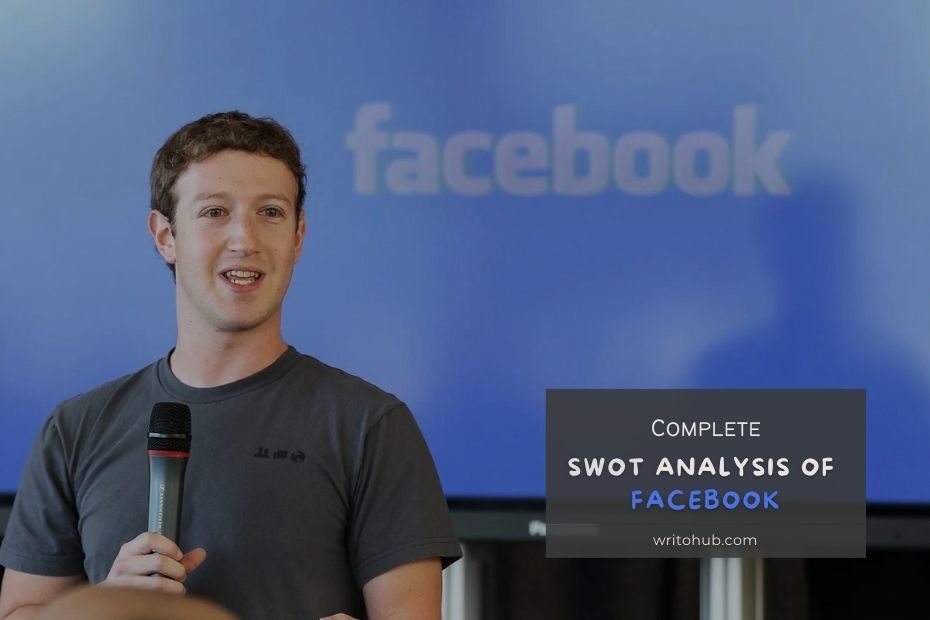Facebook, founded in 2004, is a leading social media platform that connects billions of users worldwide.
Conducting a SWOT analysis of Facebook allows us to evaluate its internal strengths and weaknesses, as well as external opportunities and threats.
This analysis provides insights into Facebook’s current market position and helps identify strategic areas for growth and improvement.
Strengths in the SWOT Analysis of Facebook
- Massive User Base: Facebook boasts a massive user base, with billions of active monthly users. This large user network provides significant opportunities for user engagement, content sharing, and advertising revenue generation.
- Global Reach: Facebook has a global presence, connecting users from different countries and cultures. Its extensive reach enables advertisers to target specific demographics and geographic regions, enhancing the platform’s appeal to marketers.
- Diverse Product Portfolio: Facebook’s product portfolio extends beyond its core social media platform. It includes other popular platforms like Instagram, WhatsApp, and Messenger, which offer different user experiences and contribute to the company’s overall growth and market diversification.
- Advertising Capabilities: Facebook’s advertising platform is highly effective, offering targeted advertising options based on user demographics, interests, and behaviors. Advertisers can leverage this feature to reach their desired audience and measure the effectiveness of their campaigns.
- Continuous Innovation: Facebook emphasizes continuous innovation, launching new features and functionalities to improve user experience and stay ahead of competitors. Examples include the introduction of Facebook Live, Stories, and the integration of augmented reality.
Weaknesses in the SWOT Analysis of Facebook
- Privacy Concerns: Facebook has faced significant scrutiny over privacy issues and data breaches. These incidents have eroded user trust and raised concerns about the company’s data handling practices. Addressing privacy concerns and strengthening data protection measures are crucial for maintaining user trust.
- Dependence on Advertising Revenue: The majority of Facebook’s revenue comes from advertising. Heavy reliance on advertising revenue exposes the company to risks associated with changes in advertising trends, competition, and economic downturns.
- Content Moderation Challenges: As a platform with billions of users, Facebook faces challenges in moderating and managing user-generated content. Striking a balance between free speech and preventing the spread of harmful or misleading information remains an ongoing challenge.
Opportunities in the SWOT Analysis of Facebook
- Growing Digital Advertising Market: The global digital advertising market continues to expand, presenting opportunities for Facebook to increase its advertising revenue. The shift towards online advertising and targeted marketing strategies plays to Facebook’s strengths in this domain.
- Expansion into Emerging Markets: Facebook can further expand its user base by targeting emerging markets with high internet penetration rates. This includes regions like India, Southeast Asia, and Africa, where Facebook’s presence is growing but still has room for further growth.
- Mobile Advertising Growth: With the increasing use of mobile devices, Facebook can leverage its mobile app and optimize its advertising capabilities to tap into the growing mobile advertising market.
- Diversification of Revenue Streams: Facebook can explore opportunities to diversify its revenue streams beyond advertising. This may include expanding its e-commerce offerings, monetizing its messaging apps, or exploring new business models and partnerships.
Threats in the SWOT Analysis of Facebook
- Intense Competition: Facebook faces intense competition from other social media platforms, such as Instagram, TikTok, Snapchat, and Twitter. These competitors constantly innovate and attract users, potentially diverting user attention and advertising dollars away from Facebook.
- Regulatory Compliance: The social media industry is subject to increasing regulatory scrutiny, particularly concerning privacy, data protection, and content moderation. Compliance with new regulations can be costly and time-consuming for Facebook, impacting its operations and reputation.
- Changing User Behavior and Preferences: User preferences and behavior can change over time, leading to shifts in social media usage patterns. Facebook must adapt to evolving user needs and preferences to remain relevant and sustain user engagement.
Conclusion:
The SWOT analysis of Facebook highlights its strengths, weaknesses, opportunities, and threats in the dynamic social media landscape.
Facebook’s massive user base, global reach, diverse product portfolio, advertising capabilities, and focus on innovation position it as a dominant player.
Addressing weaknesses related to privacy concerns, dependence on advertising revenue, and content moderation challenges is crucial for sustained success.
Seizing opportunities in the digital advertising market, emerging markets, mobile advertising, and revenue diversification can drive Facebook’s growth and market leadership.
Mitigating threats from intense competition, regulatory compliance, and changing user behavior requires strategic planning, adaptability, and ongoing investment in technology and user experience.
By leveraging its strengths, addressing weaknesses, capitalizing on opportunities, and navigating threats, Facebook can continue to connect people, foster community engagement, and provide valuable advertising solutions for businesses worldwide.
